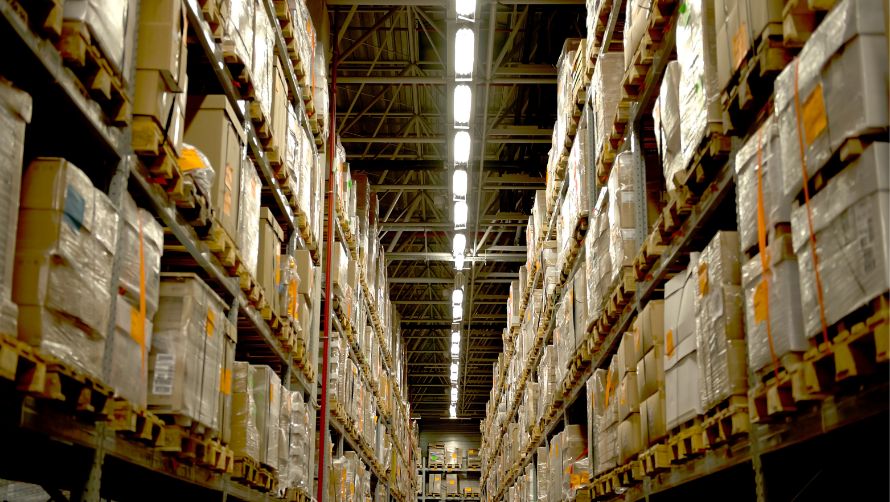The paint and coating industry involves complex manufacturing processes that rely heavily on solvents, resins, pigments, and additives—many of which are flammable, toxic, or volatile. Throughout various stages such as mixing, grinding, blending, filling, and cleaning, hazardous gases and vapors like toluene, xylene, acetone, and other VOCs can be released into the environment. These emissions not only pose serious fire, explosion, and health risks but can also lead to regulatory non-compliance if left unchecked.
Our gas detection solutions are designed to support safety at every critical stage of paint and coating production—helping companies minimize risk, protect workers, and meet environmental and safety standards.
The paint and coating industry encompasses several processes. Here are some of the key processes in The paint and coating industry:
Raw Material Handling and Storage

In the paint and coating industry, raw material handling and storage involve receiving, unloading, transferring, and storing various components such as solvents, resins, pigments, and additives. Many of these substances are volatile and flammable, stored in large drums or bulk tanks. The materials are typically stored in dedicated storage areas and later conveyed to mixing and processing sections. Improper storage or transfer can lead to gas leaks, posing fire, explosion, and health risks.
Types of Gases Present
Toluene: A common solvent used in paints; flammable and harmful if inhaled in high concentrations.
Xylene: Volatile and flammable; affects the central nervous system and poses inhalation hazards.
VOCs (Volatile Organic Compounds): Emitted from various raw materials; contribute to indoor air pollution and long-term health risks.
Acetone: Highly flammable solvent; can cause dizziness and respiratory irritation
Bulk Storage Tanks (Aboveground or Underground)
Solvents and other raw materials are stored in tanks that may be pressurized or vented. Leaks can occur from tank walls, manways, valves, or vent systems.
Fixed Point Detectors: Install fixed gas detectors near tank vents, around the tank base (for heavier-than-air vapors), and inside bund areas.
Portable Detectors: Use portable gas detectors during tank inspection, valve testing, or roof access to ensure no accumulated vapors.
Solvent Drums and Intermediate Bulk Containers (IBCs)
Smaller containers used to store and dispense raw materials. Leaks may occur during manual handling, drum piercing, or from worn seals.
Fixed Point Detectors: Install detectors in indoor drum storage rooms, near ventilation exhausts, and close to the floor level.
Portable Detectors: Operators should carry portable detectors while opening drums, transferring contents, or doing container inspections
Transfer Pipelines and Hoses
Fixed Point Detectors: Place detectors at pipeline junctions, flexible hose ends, and along long transfer lines near valves
Portable Detectors :Use portable detectors during hose connection/disconnection, cleaning, or when leakage odor is suspected.
Pumping and Metering Stations
Pumps are used to transfer raw materials. Seal failure, motor overheating, or cavitation can release vapors.
Fixed Point Detectors: • Mount detectors near pump seals, motor housings, and air exhausts.
Portable Detectors :Essential during pump maintenance, leak testing, or after pump restarts following downtime.
Pre-Mixing and Dispersion

Pre-mixing and dispersion is a critical step in paint and coating manufacturing where solid raw materials like pigments, fillers, and additives are mixed with liquid binders and solvents. High-speed dispersers or dissolvers are commonly used to create a uniform slurry before it proceeds to grinding. This stage often involves open or semi-open vessels, generating significant solvent vapor emissions, especially when handling volatile materials under agitation and heat. Adequate ventilation and gas detection are essential for protecting workers and preventing fire hazards.
Types of Gases Present
Toluene : Emitted during agitation and solvent blending; highly flammable and toxic in enclosed spaces.
Xylene : Released from open mixing tanks; causes dizziness and potential organ effects from prolonged exposure.
Methyl Ethyl Ketone (MEK): Fast-evaporating solvent used in blends; explosive in high concentrations
VOCs (Volatile Organic Compounds) : Emitted from various raw materials; contribute to indoor air pollution and long-term health risks.
Open Mixing Tanks and Dissolvers
Solvents vaporize during high-speed mixing and agitation. Vapors may accumulate around open vessels, especially in poorly ventilated rooms
Fixed Point Detectors: Install detectors around the tank perimeter at breathing zone level and near floor level (for heavy vapors).
Portable Detectors: Use during operator inspection, sampling, or cleaning when working in close proximity to the tank.
Solvent Addition Points (Manual or Automated)
Solvents are added to tanks via pipelines, funnels, or manually. Spills and splashes can cause vapor release.
Fixed Point Detectors: Place detectors near solvent dosing points and valve connections.
Portable Detectors: Operators should use portable detectors during manual addition or dosing line maintenance.
Mixer Shaft Seals and Equipment Enclosures
Mechanical agitators can release vapors through worn seals or faulty bearings during high-speed operation.
Fixed Point Detectors: Mount detectors near shaft seals and motor enclosures where leak risks are high.
Portable Detectors :Use during equipment inspection and routine maintenance to check for invisible leak
Ventilation Ducts and Local Exhaust Systems
Vapors may leak into production areas if local exhaust systems are ineffective or obstructed.
Fixed Point Detectors: Install detectors near duct openings and exhaust hoods to monitor vapor capture efficiency.
Portable Detectors :Useful for verifying areas with poor airflow or during HVAC shutdowns.
Grinding and Milling

The grinding and milling stage involves reducing pigment particle size and dispersing them evenly into the liquid phase. This is typically done using bead mills, ball mills, or sand mills, which apply mechanical force and shear energy. The process generates heat and involves continuous mixing, which can accelerate solvent vaporization. Since flammable and volatile solvents are used, this step presents a high fire and inhalation hazard without proper gas detection and ventilation.
Types of Gases Present
Toluene : Frequently present in solvent-based paint systems; vaporizes under heat generated by milling
Xylene :Released during pigment grinding; poses fire and health hazards
Ethyl Acetate : Common solvent with fast evaporation; highly flammable with strong odor.
VOCs (Volatile Organic Compounds) : Released from solvent mixtures; long-term health hazard and risk of air contamination.
Milling Chamber Seals and Housing
Seals around the grinding chamber can wear down over time, allowing solvent vapors to escape, especially under high-speed operation.
Fixed Point Detectors: Install fixed gas detectors near the milling unit’s enclosure, particularly around the base and the sealing points of the chamber.
Portable Detectors: Portable detectors should be used during equipment maintenance or inspection, especially when seal degradation is suspected
Solvent Feed Lines and Valves
Solvents are continuously fed into the mill to aid dispersion. Leaks can occur at connection points, valves, or from deteriorating hoses
Fixed Point Detectors: Detectors should be placed at the inlet points where solvents enter the grinding system and near any valves or pipe joints
Portable Detectors: Portable detectors are recommended for use during solvent line changeovers or maintenance procedures to identify leaks in real-time.
Milling Area Ventilation and Exhaust Points
The milling process generates vapors, and if the local exhaust systems are inadequate, vapors can accumulate in the work area, leading to a hazardous environment.
Fixed Point Detectors: Install fixed detectors near the exhaust points, such as extraction hoods and duct inlets, to monitor for solvent vapor leakage.
Portable Detectors :Portable detectors can be used to spot-check areas where airflow might be insufficient or where exhaust systems are temporarily turned off.
Let-Down and Blending

Let-down and blending is the stage where the concentrated pigment dispersion (mill base) is mixed with additional components such as solvents, binders, additives, and resins to form the final paint or coating formulation. This step balances viscosity, stability, and application properties. Mechanical mixers or agitators are used in large tanks or vessels. Since solvents are added in bulk quantities, there is a high risk of flammable vapor emissions.
Types of Gases Present
Toluene : Commonly added during blending; vaporizes easily and presents inhalation and fire hazards.
Butyl Acetate : A solvent used to adjust flow and leveling properties; highly volatile.
VOCs (Volatile Organic Compounds) : Emitted from multiple solvents during open blending or tank operations
Open Mixing Vessels
Vapors escape from open-top tanks during manual addition of ingredients or during agitation.
Fixed Point Detectors: Install above the mixing vessels and near operator access platforms.
Portable Detectors: Use during manual addition or sampling to check vapor buildup around the tank.
Blending Tank Valves and Agitator Seals
Seals or valves on blending tanks can degrade, releasing flammable solvent vapors under pressure
Fixed Point Detectors: Place detectors near tank bottoms, seals, and valve connections.
Portable Detectors: Use during seal inspections or when leaks are suspected around mechanical joints.
Ingredient Transfer Lines
Transfer of large solvent volumes via pipelines can cause leaks at joints or pump connections.
Fixed Point Detectors: Install near solvent pump stations and pipeline manifolds.
Portable Detectors : Ideal for maintenance staff during line flushing or transfer hose handling.
Filling and Packaging

Filling and packaging involves transferring the finished paint or coating into containers such as cans, drums, or pails. This stage includes filling, sealing, labeling, and packing for distribution. It’s a critical point of exposure due to open filling heads, splashing, and possible overfills—especially when automated or semi-automated lines are used.
Types of Gases Present
Xylene : Released when paint containers are open during filling.
Methyl Ethyl Ketone (MEK) : Common in thinner-based products; evaporates rapidly.
VOCs (Volatile Organic Compounds) : Released from headspace of filled containers or during container cleaning.
Filling Nozzles and Heads
During filling, solvent vapors are displaced from the container headspace and can escape.
Fixed Point Detectors: Install directly above filling stations and near conveyer pathways
Portable Detectors: Used during manual filling or when inspecting automatic nozzles for leakage.
Container Sealing Points
Incomplete sealing or lid misalignment can allow solvent vapors to escape after filling.
Fixed Point Detectors: Place detectors near capping machines or lid press units.
Portable Detectors: Useful during quality control checks and when investigating odor complaints.
Spill Collection and Waste Trays
Small leaks or spills during filling can collect in trays, leading to vapor buildup
Fixed Point Detectors: Install near ground level at filling lines and around drip pans
Portable Detectors : Essential during cleaning or when clearing jammed lines
Solvent Recovery and Waste Management

Solvent recovery and waste management deals with capturing and recycling solvents from cleaning operations, spills, or overspray. This includes distillation units, holding tanks, and hazardous waste containers. The aim is to reduce environmental discharge and operational costs, but this process involves concentrated vapors and potentially flammable conditions.
Types of Gases Present
Xylene : Collected from production waste; pose health and explosion risks.
Acetone : Often recovered from cleaning waste; highly flammable and volatile.
VOCs (Volatile Organic Compounds) : Accumulate in waste containers and solvent distillation units.
Solvent Distillation Units
Heat and pressure during distillation may cause vapor leakage from gaskets or fittings
Fixed Point Detectors: Install near distillation columns, pressure relief valves, and condensers.
Portable Detectors: Use during maintenance shutdowns or when checking for leaks post-operation.
Waste Storage Drums and Tanks
Improperly sealed drums or damaged valves can allow vapor release from stored solvent waste.
Fixed Point Detectors: Place detectors in drum storage rooms and tank farm perimeters.
Portable Detectors: Use during storage area inspections and before moving drums.
Solvent Transfer Pumps and Hoses
Leaks may occur while transferring solvents from tanks to recovery units.
Fixed Point Detectors: Install near pump stations and hose couplings.
Portable Detectors : Essential during transfer operations and hose changeovers.
Cleaning and Maintenance Operations

Cleaning and maintenance involve flushing mixing tanks, pipelines, and machinery with solvents to remove product residues. Maintenance also includes inspection, part replacement, and calibration of equipment. These tasks expose operators to high levels of vapor due to confined spaces and direct solvent use.
Types of Gases Present
Isopropanol : Common cleaning solvent; evaporates quickly and can accumulate in enclosed spaces.
Acetone : Frequently used for cleaning tanks and surfaces; high vapor pressure and flammability
VOCs (Volatile Organic Compounds) : Emitted during any solvent-based cleaning or open-equipment handling.
Tank and Vessel Cleaning Areas
During manual or automated cleaning, vapors are released from open tanks.
Fixed Point Detectors: Install above cleaning bays and access platforms.
Portable Detectors: Required for pre-entry checks and during confined space work.
Cleaning Solvent Storage and Dispensing Points
Handling solvents in open containers or through manual dispensers can result in vapor leaks.
Fixed Point Detectors: Place near solvent storage cabinets and dispensing stations.
Portable Detectors: Used during solvent transfer or refilling cleaning containers.
Maintenance Work on Pipelines and Equipment
Opening pipelines or flanges for maintenance can unexpectedly release trapped vapors.
Fixed Point Detectors: Install near maintenance areas with frequent access to processing lines.
Portable Detectors : Critical during shutdowns, line breaks, or valve replacements
